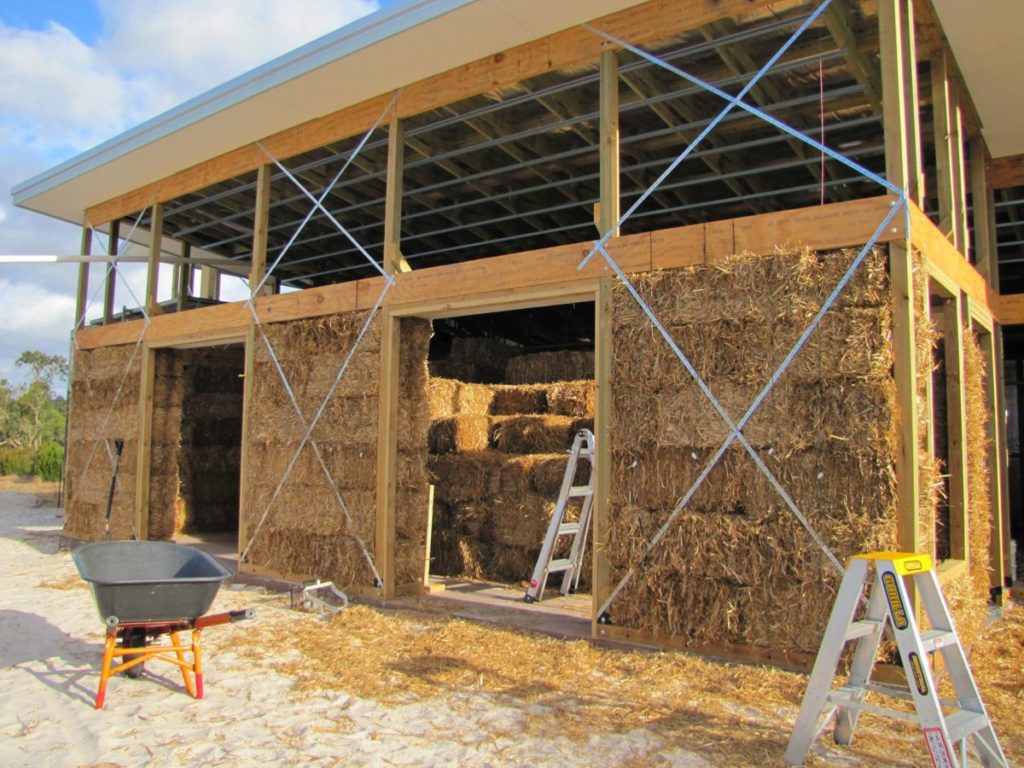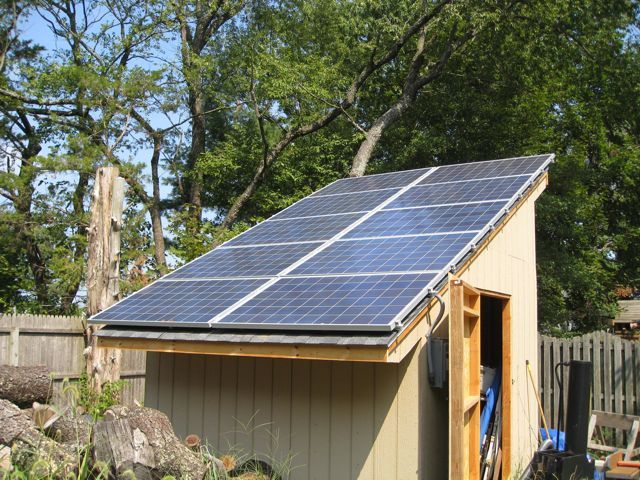Natural insulation is a growing trend in the building industry, and for good reason.
Not only does it provide superior energy efficiency and sustainability benefits, but it also contributes to a healthier indoor environment by avoiding harmful chemicals found in synthetic insulation materials.
We’ll explore some of the most effective natural insulation methods, including straw bales, cork, and other eco-friendly options.
Whether you’re building a new home or looking to retrofit your existing one, this guide will provide you with actionable information on how to harness the power of nature for a more comfortable, sustainable living space.
Choose the right material
Consider the climate, budget, and desired level of sustainability when selecting natural insulation materials. For example, straw bales may be more suitable for colder climates, while cork may be better for warmer regions.
Different natural insulation materials excel in different climate conditions, so it’s important to choose the one that best suits your region’s weather patterns.
For example, straw bales are an excellent choice for colder climates, as they provide excellent thermal insulation and can help maintain a consistent indoor temperature.
In contrast, cork is a better option for warmer regions, as it provides natural insulation against heat and can help keep your building cooler.
Considering your budget is essential, as some natural insulation materials can be more expensive than others.
Selecting a sustainable insulation material that minimizes environmental impact can contribute to your building’s overall sustainability and reduce its carbon footprint.
By considering these factors, you can choose the ideal natural insulation material for your project and enjoy a comfortable, energy-efficient, and eco-friendly living space.
Understand R-values
Familiarize yourself with the R-values of different natural insulation materials. R-value measures the material’s ability to resist heat flow and determine how well it insulates.
As you consider natural insulation materials for your home or building project, it’s essential to familiarize yourself with the R-values of different options.
R-value measures the material’s ability to resist heat flow, determining how well it insulates and how much energy it will save you in heating and cooling costs over time.
Some popular natural insulation materials and their R-values include
* Straw bales (R-2 to R-4): Straw bales are a sustainable, eco-friendly option for insulation.
They can be blown into walls, or bales can be stacked in walls for additional support.
* Recycled denim (R-2 to R-4): Made from repurposed denim textiles, recycled denim insulation is an eco-friendly and effective option.
It can be blown into walls like straw bales or used as a filling for loose-fill insulation.
* Wool (R-3 to R-4): Wool is a natural, renewable resource that provides excellent insulation.
It can be used as batts, rolls, or loose-fill insulation, and is resistant to moisture and mold.
* Cellulose (R-3.5 to R-4.5): Cellulose insulation is made from recycled paper products and can be blown into walls or used as a loose-fill material.
It’s treated with borates for fire resistance and is resistant to moisture.
* Fiber batts (R-3.5 to R-4.5): Fiber batts are made from a mixture of natural fibers, like cotton and wool, and can be used in walls, floors, and ceilings.
They provide consistent insulation and can be cut to fit unique spaces.
By familiarizing yourself with the R-values of different natural insulation materials, you can make an informed decision about which materials to use for your construction project.
These materials offer a range of benefits, including high insulation value, resistance to moisture and mold, and sustainability.
When selecting insulation, consider the climate, budget, and desired level of comfort.
By choosing the right natural insulation materials, you can create a more energy-efficient, comfortable, and sustainable living space.
Consider thermal mass
Thermal mass refers to the ability of a material to absorb and release heat. Some natural insulation materials like rammed earth and adobe have high thermal mass, which can help regulate temperatures and save energy.
Thermal mass, a key consideration in building design, refers to the ability of a material to absorb and release heat.
Certain natural insulation materials, such as rammed earth and adobe, possess high thermal mass properties, making them ideal for regulating temperatures and saving energy.
These materials can absorb and store heat energy during the day, then release it at night, thereby maintaining a consistent and comfortable indoor temperature.
This natural temperature regulation can reduce the need for heating and cooling, resulting in significant energy savings.
Thermal mass can also help to stabilize indoor temperatures and reduce the risk of overheating or overcooling, providing a more comfortable living space.
By incorporating high thermal mass materials into building design, homeowners and architects can harness the natural power of the earth to create energy-efficient and sustainable living environments.
Use recycled materials
Consider using recycled materials like reclaimed wood or denim insulation. These materials can provide excellent insulation and help reduce waste.
Using recycled materials like reclaimed wood or denim insulation is a thoughtful and sustainable approach to construction.
Not only does this practice help reduce waste and minimize the impact on the environment, but it also provides excellent insulation properties.
Reclaimed wood, for instance, is a highly effective insulator, and it can be easily repurposed from old buildings or demolition sites.
The process of reclaiming wood involves deconstructing old structures and salvaging the usable lumber, which is then kiln-dried and processed to remove any impurities.
The result is a high-quality insulation material that is both durable and environmentally friendly.
Similarly, denim insulation is made from recycled denim jeans that have been shredded and spun into a fiber.
This eco-friendly insulation material is not only excellent at reducing heat transfer, but it also provides a unique aesthetic that can add a touch of character to any building.
By opting for recycled materials like reclaimed wood or denim insulation, builders and homeowners can make a significant positive impact on the environment while also enjoying the many benefits of sustainable construction.
Consider the building’s design
The design of the building can affect the performance of natural insulation materials. For example, straw bale walls work best in buildings with a consistent temperature, while cork may be more suitable for buildings with varying temperatures.
The design of the building can have a significant impact on the performance of natural insulation materials.
For instance, straw bale walls are most effective in buildings with consistent temperatures, as they rely on the natural fibers to maintain a consistent temperature throughout the structure.
In contrast, cork-based insulation is more suitable for buildings with varying temperatures, as it can better handle changes in temperature without losing its insulating properties.
This is because cork is more flexible and has a lower thermal conductivity, making it better equipped to handle temperature fluctuations.
Therefore, when selecting natural insulation materials for a building, it is important to consider the building’s design and the desired temperature range to ensure the most effective performance of the insulation materials.
By taking this into account, architects and builders can choose the most appropriate natural insulation materials for a given project and optimize their performance, leading to energy-efficient and comfortable buildings.
Maintain adequate ventilation
Natural insulation materials can trap moisture and create an ideal environment for mold growth. Ensure proper ventilation to prevent these issues.
When using natural insulation materials like wool, cotton, or recycled denim, it’s essential to ensure proper ventilation to prevent moisture buildup and mold growth.
These materials have the tendency to trap moisture, creating an ideal environment for mold spores to thrive.
If not addressed, mold can spread quickly and cause significant damage to your home, as well as pose health risks to its occupants.
Therefore, it’s important to provide adequate ventilation to dissipate excess moisture and maintain a dry environment.
This can be achieved through the installation of vents, fans, or a whole-house ventilation system.
By taking this precautionary measure, you can prevent moisture accumulation and create a healthier living space.
Monitor and adjust
Monitor the performance of your natural insulation materials and make adjustments as needed. For example, adding a vapor barrier or changing the layout of the building can improve insulation efficiency.
To ensure the optimal performance of your natural insulation materials, it’s essential to regularly monitor their effectiveness and make adjustments as needed.
One key aspect to consider is the presence of a vapor barrier, as it can significantly impact the insulation efficiency of your natural materials.
Without a proper vapor barrier, moisture can seep into the insulation, reducing its effectiveness and potentially causing mold growth or other issues.
By adding a vapor barrier, such as a thick layer of plastic sheeting or a membrane-based system, you can prevent moisture from entering the insulation and ensure that it continues to perform optimally.
Another consideration is the layout of your building.
The placement of windows, doors, and other openings can significantly affect the efficiency of your natural insulation materials.
For example, if a window is placed too close to a wall, it can create a thermal bridge that lets cold air enter the building and warm air escape.
By adjusting the layout of your building, you can minimize thermal bridges and maximize the effectiveness of your natural insulation materials.
You may need to make adjustments to the thickness and density of your insulation materials over time, as the materials may settle or compress over the course of several years.
By regularly monitoring the performance of your natural insulation materials and making adjustments as needed, you can ensure that your building remains comfortable, energy-efficient, and safe to inhabit.
Plan for long-term maintenance
Natural insulation materials may require more maintenance than synthetic materials. Plan for regular checks and potential repairs to ensure the materials remain effective over time.
Natural insulation materials, such as wool, cotton, and cellulose, are prone to degradation and require more maintenance than synthetic materials like fiberglass or foam.
Over time, these natural materials can lose their insulating properties due to moisture, pests, or wear and tear.
To ensure the effectiveness of natural insulation, it’s important to perform regular checks and potential repairs.
This may involve inspecting for signs of damage, repairing any tears or holes, and treating the materials with a water-repellent coating.
It’s important to maintain proper ventilation and humidity levels in the space to prevent moisture buildup and the growth of mold and mildew.
By investing time and resources into regular maintenance, you can extend the lifespan of your natural insulation materials and ensure they continue to provide effective thermal performance.
Want More? Dive Deeper Here!
Hey there! If you’re the type who loves going down the rabbit hole of information (like we do), you’re in the right spot. We’ve pulled together some cool reads and resources that dive a bit deeper into the stuff we chat about on our site. Whether you’re just killing time or super into the topic, these picks might just be what you’re looking for. Happy reading!






